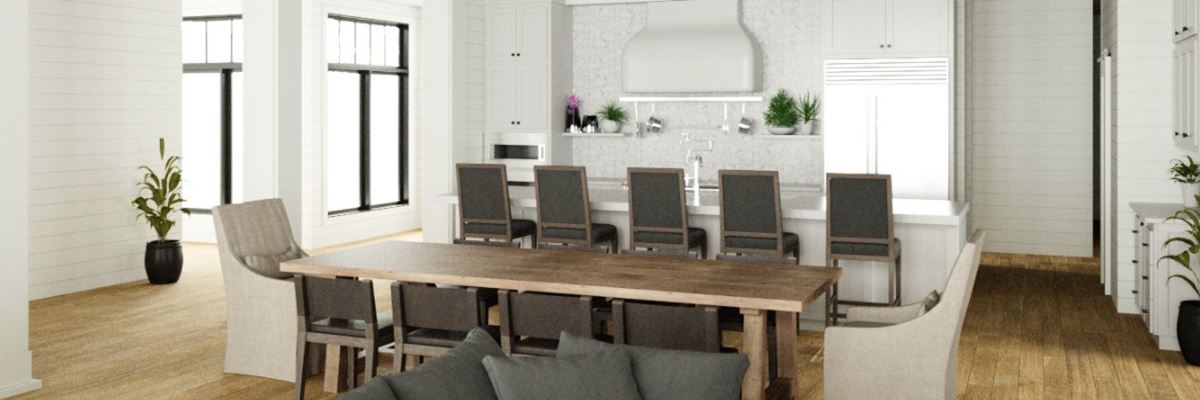When it comes to architectural interior lighting and rendering, there are a few key things to keep in mind in order to achieve the most realistic and impressive results. In this blog post, we will go over some of the best practices for achieving stunning renderings with realistic lighting effects. With just a little bit of extra effort, you can take your renderings from good to great!
The first step to great interior architectural renderings is good modeling. Make sure you take the time in your model to create accurate walls and windows, flooring, ceilings and furniture. Accurate models can save hours of effort down the road when it comes time for rendering – especially if you are working with a physically based render engine.
Once your model is complete, it’s time to start adding in lighting. When creating interior scenes, there are two main types of light to consider: ambient and direct. Ambient light provides a general overall illumination to the scene, while direct light casts sharp shadows and highlights specific areas of the scene. In order to create a realistic and balanced lighting scheme, it is important to use both ambient and direct light in appropriate amounts.
Use HDR
One of the best ways to achieve realistic lighting is by using HDR images as your source material. An HDR image contains a high dynamic range of luminance information, which can be used to create extremely realistic lighting effects in your renderings. There are a number of great HDR images available online, or you can create your own using various photo editing programs.
When working with HDR images, it is important to use the correct exposure settings. In your rendering software, set the exposure time to match the length of time that the shutter was open when taking the original HDR image. This will ensure that the HDR image is correctly reproduced in your rendering.
Use Realistic Lighting Fixture Models
In order to create truly realistic lighting effects, it is important to use accurate lighting models. Many rendering software packages include a variety of different lighting models that can be used to simulate different types of light sources. When choosing a lighting model, always make sure to select one that is as close to the real-world counterpart as possible.
One of the best ways to get accurate lighting models is to use manufacturer’s data sheets. Many lighting manufacturers provide detailed information on their products, including spectral power distribution graphs and photometric data. This information can be used to create very realistic lighting models in your rendering software.
Use Realistic Material Properties
In order to create realistic materials, it is important to use accurate material properties. Many rendering software packages include a variety of different material types that can be used to simulate different types of surfaces. When choosing a material type, always make sure to select one that is as close to fixtures in the real world as possible.
One of the best ways to get accurate material properties is to use manufacturer’s data sheets. Many materials manufacturers provide detailed information on their products, including spectral power distribution graphs and photometric data. This information can be used to create very realistic material properties in your rendering software.
Add Shadows and Reflections
Adding shadows and reflections to your renderings can greatly improve their realism. In order to create convincing shadows and reflections, it is important to use accurate light sources and material properties.
When adding shadows and reflections to your rendering, always make sure that the material properties are set up correctly. The best way to achieve realistic shadows and reflections is by using accurate light models in conjunction with real-world materials data sheets.
Render at a High Resolution
In order for your renderings to look their best, it is important to render them at a high resolution. Many rendering software packages allow you to render your images at resolutions up to 4000 x 4000 pixels. When rendering at a high resolution, make sure that your computer has enough processing power to handle the workload.
By following these tips and tricks, you can create realistic and impressive architectural interior lighting and rendering projects. By using accurate light sources, realistic material properties, and high-resolution renders, you can create images that look convincingly real. With a little bit of practice, you can achieve stunning results in no time!
Click here for some of our images that showcase architectural interior lighting and rendering. And be sure to contact us to see if we can help you on your next project.

0 Comments